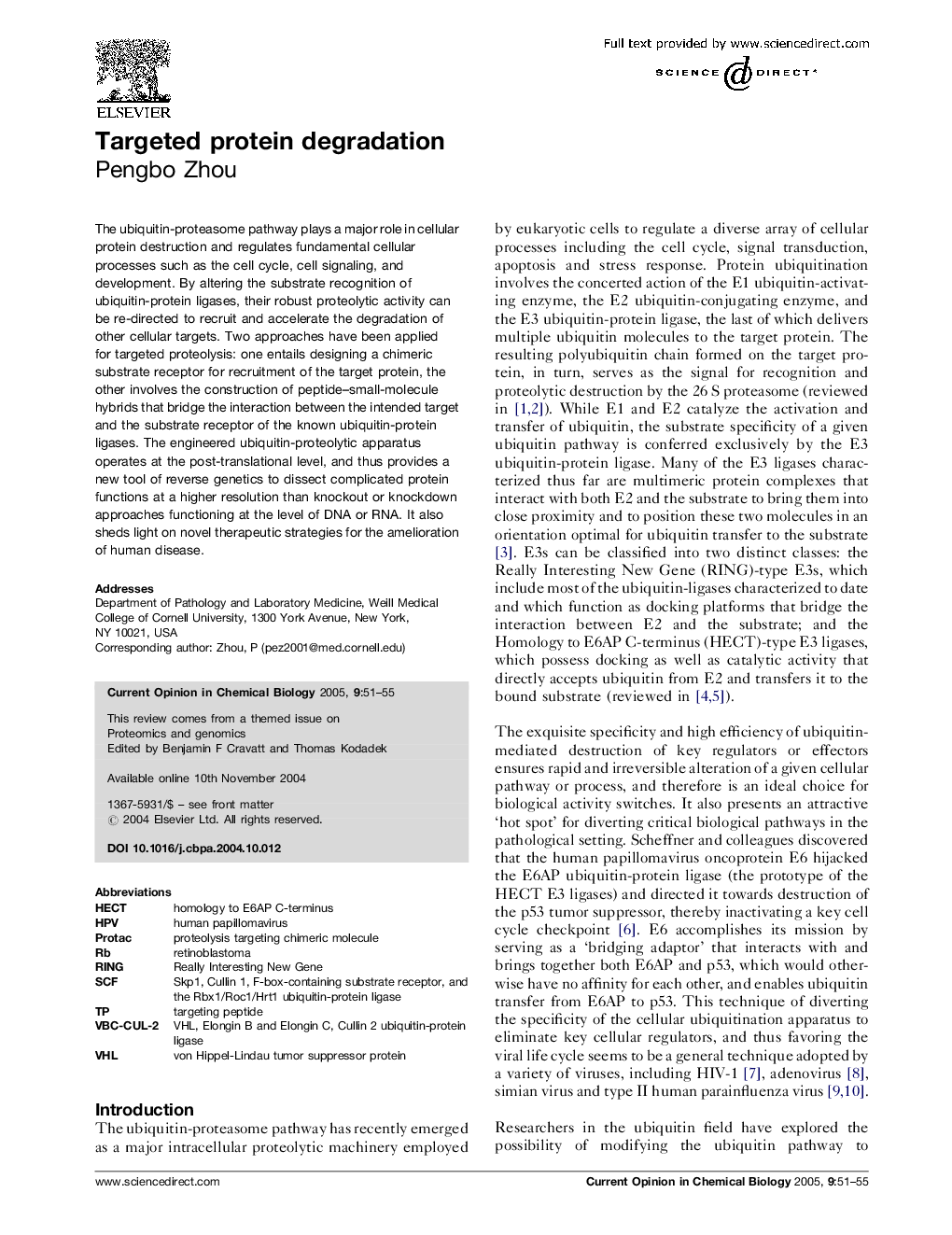| Article ID | Journal | Published Year | Pages | File Type |
|---|---|---|---|---|
| 10565418 | Current Opinion in Chemical Biology | 2005 | 5 Pages |
Abstract
The ubiquitin-proteasome pathway plays a major role in cellular protein destruction and regulates fundamental cellular processes such as the cell cycle, cell signaling, and development. By altering the substrate recognition of ubiquitin-protein ligases, their robust proteolytic activity can be re-directed to recruit and accelerate the degradation of other cellular targets. Two approaches have been applied for targeted proteolysis: one entails designing a chimeric substrate receptor for recruitment of the target protein, the other involves the construction of peptide-small-molecule hybrids that bridge the interaction between the intended target and the substrate receptor of the known ubiquitin-protein ligases. The engineered ubiquitin-proteolytic apparatus operates at the post-translational level, and thus provides a new tool of reverse genetics to dissect complicated protein functions at a higher resolution than knockout or knockdown approaches functioning at the level of DNA or RNA. It also sheds light on novel therapeutic strategies for the amelioration of human disease.
Keywords
Related Topics
Physical Sciences and Engineering
Chemistry
Chemistry (General)
Authors
Pengbo Zhou,
